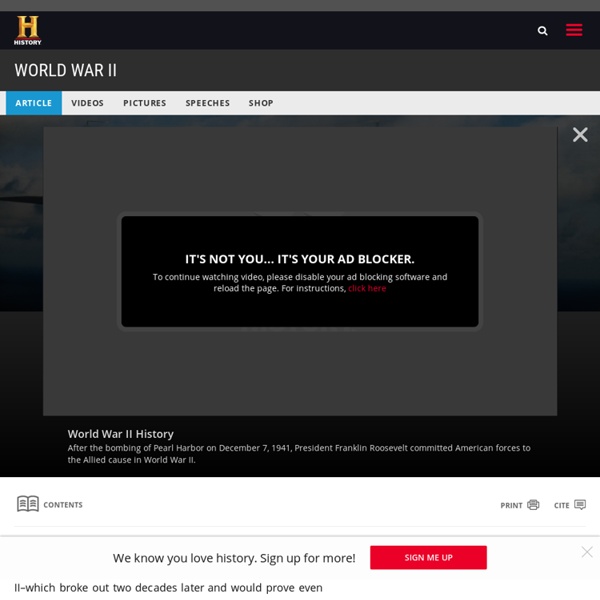



The Holocaust - World War II Beginning in late 1941, the Germans began mass transports from the ghettoes in Poland to the concentration camps, starting with those people viewed as the least useful: the sick, old and weak and the very young. The first mass gassings began at the camp of Belzec, near Lublin, on March 17, 1942. Five more mass killing centers were built at camps in occupied Poland, including Chelmno, Sobibor, Treblinka, Majdanek and the largest of all, Auschwitz-Birkenau. From 1942 to 1945, Jews were deported to the camps from all over Europe, including German-controlled territory as well as those countries allied with Germany. The heaviest deportations took place during the summer and fall of 1942, when more than 300,000 people were deported from the Warsaw ghetto alone. Though the Nazis tried to keep operation of camps secret, the scale of the killing made this virtually impossible.
OurStory : Activities : Life in a WWII Japanese-American Internment Camp Historic time period: 1929–1945 During World War II, the United States was at war with Japan. By an executive order of President Franklin D. Since the end of the war, the Japanese American community has loaned a large collection of objects to the National Museum of American History. Baseball Saved Us is a story about a young American boy of Japanese descent named Shorty who is forced to leave his home and move to an army prison camp for the duration of the war. Read more about life in the internment camps » Read This Book You can learn more about the internment of Japanese Americans in these books. Featured Book Baseball Saved Us by Ken Mochizuki Baseball Saved Us. Recommended Book Read Baseball Saved UsMeet Shorty, who is forced to leave his home and move to an army prison camp during World War II. Activities Honoring Japanese AmericansLearn From ObjectsWhat would a medal for the kids who lived in internment camps look like?
Mexican-American War - HISTORY The Mexican-American War (1846-1848) marked the first U.S. armed conflict chiefly fought on foreign soil. It pitted a politically divided and militarily unprepared Mexico against the expansionist-minded administration of U.S. President James K. Causes of the Mexican-American War Texas gained its independence from Mexico in 1836. Nonetheless, annexation procedures were quickly initiated after the 1844 election of Polk, who campaigned that Texas should be “re-annexed” and that the Oregon Territory should be “re-occupied.” The Mexican-American War Begins On April 25, 1846, Mexican cavalry attacked a group of U.S. soldiers in the disputed zone under the command of General Zachary Taylor, killing about a dozen. Following those battles, Polk told the U.S. Mexican-American War: U.S. At that time, only about 75,000 Mexican citizens lived north of the Rio Grande. Meanwhile, U.S. troops led by Gen. Treaty of Guadalupe Hidalgo Ends the Mexican-American War
Battle of Britain The Battle of Britain was a struggle between the German Luftwaffe (commanded by Hermaan Göring) and the British Royal Air force (headed by Sir Hugh Dowding’s Fighter Command) which raged over Britain between July and October 1940. The battle, which was the first major military campaign in history to be fought entirely in the air, was the result of a German plan to win air superiority over Southern Britain and the English Channel by destroying the British air force and aircraft industry. Hitler saw victory in the battle as a prelude to the invasion of Britain (codenamed Operation Sealion). In May 1940, German forces had overrun Belgium, the Netherlands and northern France using Blitzkrieg (‘Lightening War’) tactics. The Luftwaffe’s first disadvantage was that it was neither trained nor equipped for the long range operations which became part of the battle. The climax of the battle came on 15 September, a day in which the Luftwaffe lost 56 planes and the RAF 28.
Spanish-American War - HISTORY The Spanish-American War was an 1898 conflict between the United States and Spain that ended Spanish colonial rule in the Americas and resulted in U.S. acquisition of territories in the western Pacific and Latin America. Causes: Remember the Maine! The war originated in the Cuban struggle for independence from Spain, which began in February 1895. Spain’s brutally repressive measures to halt the rebellion were graphically portrayed for the U.S. public by several sensational newspapers engaging in yellow journalism, and American sympathy for the Cuban rebels rose. The growing popular demand for U.S. intervention became an insistent chorus after the still-unexplained sinking in Havana harbor of the American battleship USS Maine, which had been sent to protect U.S. citizens and property after anti-Spanish rioting in Havana. War Is Declared Spain announced an armistice on April 9 and speeded up its new program to grant Cuba limited powers of self-government. But the U.S. Scroll to Continue
Revolutionary War For more than a decade before the outbreak of the American Revolution in 1775, tensions had been building between colonists and the British authorities. Attempts by the British government to raise revenue by taxing the colonies (notably the Stamp Act of 1765, the Townshend Tariffs of 1767 and the Tea Act of 1773) met with heated protest among many colonists, who resented their lack of representation in Parliament and demanded the same rights as other British subjects. Colonial resistance led to violence in 1770, when British soldiers opened fire on a mob of colonists, killing five men in what was known as the Boston Massacre. After December 1773, when a band of Bostonians dressed as Mohawk Indians boarded British ships and dumped 342 chests of tea into Boston Harbor, an outraged Parliament passed a series of measures (known as the Intolerable, or Coercive Acts) designed to reassert imperial authority in Massachusetts.